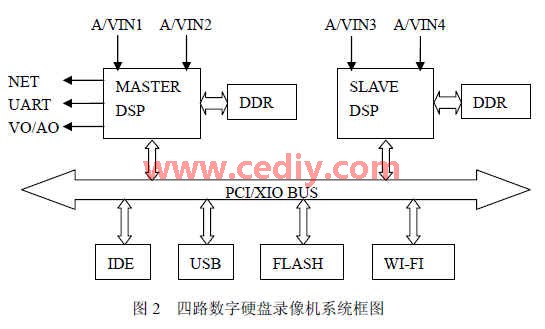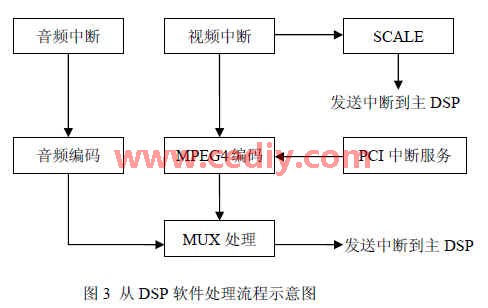1. Introduction With the development of science and technology, vehicles have become an indispensable part of people's lives. As a manned tool, people have appeared in various places. The rapid growth in demand for various types of automotive safety has led to a rapid growth of the automotive monitoring industry. We often hear reports that flight attendants carry passengers to collect money without giving tickets or giving fake tickets, there are more cases of pick-up and grabbing on vehicles, and disputes in traffic accidents. These cases are difficult to resolve because of the difficulty of obtaining evidence on the spot. If you can record the situation inside and outside the car at any time, for various purposes such as recall, evaluation certificate, evidence, etc., you will be able to solve the above problems well. As a new high-tech product in the surveillance industry, digital car DVRs have received widespread attention. It is an embedded digital hard disk video recorder installed on trains, cars and other mobile vehicles that integrates digital recording, monitoring, entertainment, advertising and other functions. At present, digital hard disk recorders with hard disks or CF cards as a single storage device are generally available in China. Most of them are MPEG2 hard compression encoding, which has the disadvantages of high code rate, the need for large-capacity hard disks, and unsuitable transmission. Most hard disk recorders use ordinary hard disks or notebook hard disks as storage media. Due to the mechanical characteristics of the hard disk, there are problems such as unstable recording and hard disk damage, which seriously affects the reliability and stability of the car recorder. There are also a small number of use a single CF card as a storage medium, there are shortcomings of small capacity can not save long-term recording data.
This paper presents a new design scheme of the on-board digital hard disk recorder, which can solve the above problems well. Not only can the high-definition recording of the on-site environment of the car (up to DVD quality), but also low-stream transmission can be used at the same time; the CF card is used as the storage device when driving, and the automatic backup strategy of parking is adopted to avoid the driving process The use of mechanical hard drives in the vehicle greatly improves the reliability and stability of the on-board digital hard disk recorder. This digital hard disk video recorder also has strong expansion capabilities such as advertising video playback and driving records, has broad application prospects and value-added application space, and can be fully expanded into a vehicle platform with 2 sets of monitoring, driving records, navigation and multimedia applications. Replace the existing car DVD player.
Second, the overall system design This program is mainly designed for vehicle applications, mainly to achieve the following functions:
1. Realize four-channel real-time audio and video synchronization MPEG4 high-definition video, can achieve duplex playback and simultaneous dual-channel playback.
2. Realize multiple recording modes, such as manual recording, scheduled recording, alarm recording, driving status (such as braking, speeding and reversing) recording, detection recording and pre-recording for more than 30 seconds.
3. Realize remote transmission of four low-code streams, and can realize remote wireless transmission through WI-FI or GPRS to realize remote monitoring.
4. Realize high-speed USB2.0 interface, provide recording, playback and fast backup of USB disk devices.
5. Support CF card and IDE hard disk at the same time, realize reliable parking automatic backup function, improve reliability and stability.
6. Realize remote upload of alarm events and driving status, realize network functions such as remote monitoring and remote backup, and provide wireless network support.
7. Realize dual-head display output, that is, support two independent video outputs at the same time. For example, one channel can be used to play advertising videos, and one channel can be used to watch the scene and playback.
The following figure is the functional block diagram of the four-channel digital hard disk recorder:

In order to realize the above functions, this design uses two high-performance DSPs as the core devices to form the system. One DSP is the slave device, which mainly implements four-channel MPGE4 encoding of up to 1 / 2D1; one DSP is the master device, which mainly completes network transmission Applications such as encoding, playback, playing advertising videos, storage, control, output, and network transmission. See the following figure for specific implementation:


Among them, DSP adopts NexperiaTM series high-definition media processor PNX1700 launched by Philips Electronics. It integrates media processing, network connection, and display enhancements on a single chip, and is specifically designed to provide unprecedented picture quality for streaming movies, news, digital photos, and TV programs. The performance of PNX1700 is twice that of PNX1500, while ensuring the compatibility of software and hardware. Digitally connected home devices using PNX1700 include IP set-top boxes, digital media adapters, personal video recorders, video phones, and televisions. Based on the powerful processing capabilities of PNX1700, in theory a PNX1700 can complete 8-channel CIF MPEG4 encoding; at the same time, in order to meet the needs of applications, it also provides many video-specific functions, such as video filtering, De-interlace processing, high-resolution display output, OSD function, etc., provides network and IDE interfaces, and also provides 2 video input / output interfaces. PNX1700 also has a PCI / XIO bus, which provides good expansion capabilities, such as USB, WI-FI, etc.
Since the master / slave DSP has two video inputs each, a total of four video inputs can be realized, but the image data exchange through PCI is required to realize the on-site display and reasonable allocation of resources of the four channels of images. That is, after the master DSP collects the video data, it must write to the memory of the slave DSP through DMA and notify the slave DSP through the interrupt; and after the slave DSP collects the video data, it must also notify the master DSP to read the data through the interrupt. In this way, 4-picture live display and 4-channel dual-stream MPEG4 coding design can be realized, and the burden on the main DSP can be reduced, so that the main DSP can have more resources to realize value-added applications, such as advertising video playback, GPS driving positioning And web applications.
3. Software design This solution uses the pSOS embedded operating system provided by the Nexperia platform. Since this operating system is a dedicated operating system provided by philips, it has mature large-scale applications and has good performance on the PNX1700, such as real-time performance and stability. The performance and scalability are not worse than other commercial embedded operating systems. The program is divided into two parts, one is the slave program, which is relatively simple, mainly the realization of 4-way coding; the other part is the design of the main program, which is more complicated, and mainly implements transmission coding, file storage management, playback, and control.
Figure 3 is a schematic diagram of the software processing flow of the slave program. As can be seen from Figure 3, the main job of the slave program is to realize the encoding of video and audio data. Among them, the image data of 2 channels is provided by the main DSP and notified by PCI interrupt. Since the PNX1700 supports 4-channel stereo collection, audio data can be collected locally. When the encoding is completed, the data performs the necessary buffer processing and sends an interrupt to notify the main DSP. After receiving the interrupt request, the main DSP actively reads and completes the storage after processing by the file system.

Figure 4 is a schematic diagram of the video stream processing flow of the main DSP program. As can be seen from Figure 4, the main program not only performs on-site display after receiving the video acquisition completion interrupt, but also writes to the memory of the slave DSP through the PCI DMA and sends Interrupt notification from the DSP; if it is necessary to display the image data collected from the DSP, it also needs to process the interrupt request from the DSP, and read the image data cached in the DSP memory through the PCI DMA, you can achieve any single-channel or multi-screen synthesis On-site display. If dual stream transmission is required, coded transmission can be performed.

Figure 5 is a schematic diagram of the main DSP program recording data storage and playback process. For non-vehicle applications, the recorded data can be directly stored on a large-capacity hard disk after being processed by the file system. However, due to the strong vibration in the vehicle environment, not only is it unreliable to read and write, but it is also easy to damage the mechanical hard disk, so this solution has designed a unique automatic parking backup function, that is, the video data generated during the driving process is temporarily passed through the special file system Stored in the CF card, when the system detects the parking state, then wake up the hard disk and transfer the CF card video data to the hard disk, so that the hard disk does not need a complicated and expensive shock absorber system, no matter how bad the road conditions will not be damaged The hard disk can easily and reliably achieve long-term storage of driving video data, and can greatly improve the reliability and stability of the video recorder and extend the service life of the hard disk. The video data can be backed up through the network and USB disk, and can also be burned with a recorder for long-term preservation for future reference.
If it is equipped with a remote network monitoring center, it can be remotely monitored through a wireless network such as GPRS to build a complete mobile device monitoring network system.
4. Value-added applications Aiming at the automotive application market, the value-added applications of in-vehicle digital video recorders have a huge application space, such as advertising, movies, GPS navigation, GPRS remote transmission, and driving records (car black boxes). Due to the dual DSP design, this system has relatively rich interface resources and DSP resources, which provides sufficient resource space for value-added applications. In particular, the dual-output design can be used to play advertising videos and preview / playback video materials without affecting each other.
V. Summary As a monitoring device suitable for vehicles, on-board hard disk recorders are becoming more and more widely used and their functions will be greater and greater with the increase of social recognition and the continuous improvement of their functions. Not only will it be widely used in long-distance buses and buses, but also in the shuttle buses of trains, ships, ambulances, fire trucks, public security traffic police vehicles, material transportation vehicles, wagons, institutions, schools, kindergartens and other units It has a very wide range of uses. Car digital hard disk video recorders will play a very important role in making society more civilized and safer in life.
The author's innovation:
1) Based on two high-performance DSPs, adopting advanced MPEG4 compression algorithm to form a four-way real-time dual-stream multi-function vehicle-mounted digital hard disk recorder through PCI.
2) The CF card is used as the storage device when driving, and the strategy of automatic parking backup is used. This can avoid the use of mechanical hard disks during driving and greatly improve the reliability of the on-board digital hard disk recorder.
Cat 6 Connectors,Cat6A Connectors,Cat6 Utp Connector,Cat6 Utp Plug
Dongguan Fangbei Electronic Co.,Ltd , https://www.connectorfb.com